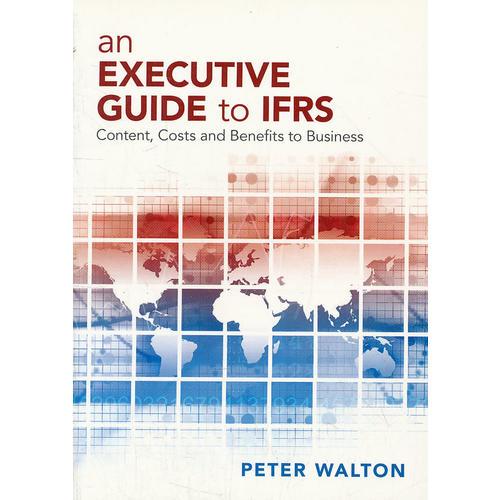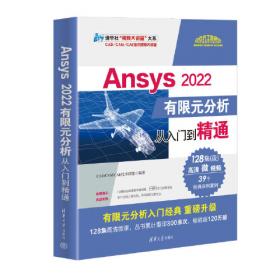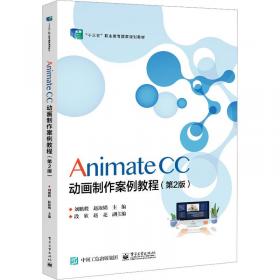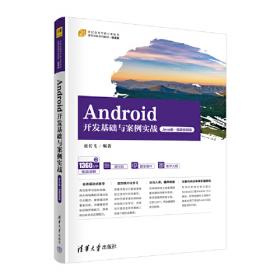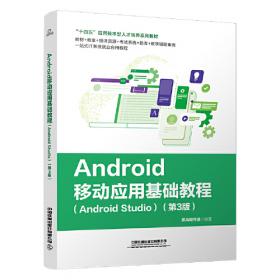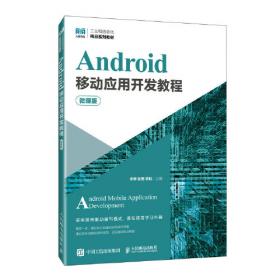An Executive Guide To IFRS - Content, Costs And Benefits To Business
出版时间:
2011-06
版次:
1
ISBN:
9780470664902
定价:
345.00
装帧:
平装
开本:
32开
纸张:
胶版纸
页数:
228页
-
Part three covers the creation of the IFRS, provides detailsof the IASB's standard-setting process, and describes how peopleoutside the IASB can participate in the process and lobbyeffectively. It also examines the history of the IASB, and includesa chapter based on the author's observation of the standard settersin action.
An Executive Guide to IFRS is an invaluable resource foranyone seeking to understand the essentials of InternationalFinancial Reporting Standards. Peter Walton, PhD, FCCA, is a preparer turned academic andwriter. He is now a professor at ESSEC Business School, Paris, andIFRS Director of the ESSEC-KPMG Financial Reporting Centre there.He is the publisher of IFRS Monitor which provides a detailedmonthly report of IASB proceedings. He has attended virtually allthe meetings of the IASB since it was formed in 2001. Preface.
Acknowledgement.
About the author.
1 Worldwide convergence on IFRS.
Convergence.
Large company advantages.
Why governments support IFRS.
The use of IAS/IFRS in the world.
Problems with convergence.
Modified convergence.
Small and medium-sized business.
Conclusion.
2 Content of financial statements.
IAS 1 presentation of financial statements.
Statement of Comprehensive Income.
Statement of Financial Position.
Statement of Cash Flows.
Statement of Changes in Equity.
Accounting policies and changes.
Fair presentation.
Conventions.
Interim financial statements.
Conclusion.
Appendix: The IASB Conceptual Framework.
Qualitative characteristics.
Assets and liabilities.
3 Investments in other companies.
Consolidation.
Translation of foreign subsidiaries.
Business combinations.
Investments in associates.
Joint ventures.
Assets held for disposal.
Equity investments.
Conclusion.
Appendix: Fair value measurement.
The market.
Measurement hierarchy.
Highest and best use.
Liabilities.
Conclusion.
4 Income statement items.
Revenue recognition.
Agriculture.
Government grants.
Pensions.
Stock options.
Inventories.
Income taxes.
Interest expense.
Foreign exchange differences.
Accounting in hyperinflationary economies.
Conclusion.
5 Balance sheet items.
Property, plant and equipment.
Investment property.
Leased assets.
Intangible assets.
Mineral rights.
Impairment.
Assets held for sale.
Financial instruments.
Disclosures about financial instruments.
Defining equity.
Liabilities.
Contingent liabilities.
Conclusion.
6 Other significant standards.
First time adoption.
Related party transactions.
Segment reporting.
Concessions.
Events after balance sheet date.
Insurance.
Conclusion.
7 T he IFRS for SMEs.
Development of the standard.
Content.
Conclusion.
8 Comparison with US GAAP.
Conceptual Framework.
Consolidation.
Financial instruments.
Offsetting.
Non-financial assets.
Impairment.
Miscellaneous.
Conclusion.
9 T he IASB’s standard-setting process.
Due process.
Discussion paper.
Exposure draft.
New standard.
Interpretations.
Structure.
Finance.
Lobbying the IASB.
Monitoring the IASB.
Conclusion.
10 History of the IASB.
The start-up phase.
Steady progress.
The enhancement phase.
Transition.
Global convergence.
Relations with the US.
Relations with Europe.
The financial crisis.
Conclusion.
11 Observer notes.
Standard-setters are people.
What sort of people?.
What do they think?.
Fair value controversies.
Executory contracts.
True and fair view.
Anti-abuse measures.
Conclusions.
Further reading.
Index.
-
内容简介:
Part three covers the creation of the IFRS, provides detailsof the IASB's standard-setting process, and describes how peopleoutside the IASB can participate in the process and lobbyeffectively. It also examines the history of the IASB, and includesa chapter based on the author's observation of the standard settersin action.
An Executive Guide to IFRS is an invaluable resource foranyone seeking to understand the essentials of InternationalFinancial Reporting Standards.
-
作者简介:
Peter Walton, PhD, FCCA, is a preparer turned academic andwriter. He is now a professor at ESSEC Business School, Paris, andIFRS Director of the ESSEC-KPMG Financial Reporting Centre there.He is the publisher of IFRS Monitor which provides a detailedmonthly report of IASB proceedings. He has attended virtually allthe meetings of the IASB since it was formed in 2001.
-
目录:
Preface.
Acknowledgement.
About the author.
1 Worldwide convergence on IFRS.
Convergence.
Large company advantages.
Why governments support IFRS.
The use of IAS/IFRS in the world.
Problems with convergence.
Modified convergence.
Small and medium-sized business.
Conclusion.
2 Content of financial statements.
IAS 1 presentation of financial statements.
Statement of Comprehensive Income.
Statement of Financial Position.
Statement of Cash Flows.
Statement of Changes in Equity.
Accounting policies and changes.
Fair presentation.
Conventions.
Interim financial statements.
Conclusion.
Appendix: The IASB Conceptual Framework.
Qualitative characteristics.
Assets and liabilities.
3 Investments in other companies.
Consolidation.
Translation of foreign subsidiaries.
Business combinations.
Investments in associates.
Joint ventures.
Assets held for disposal.
Equity investments.
Conclusion.
Appendix: Fair value measurement.
The market.
Measurement hierarchy.
Highest and best use.
Liabilities.
Conclusion.
4 Income statement items.
Revenue recognition.
Agriculture.
Government grants.
Pensions.
Stock options.
Inventories.
Income taxes.
Interest expense.
Foreign exchange differences.
Accounting in hyperinflationary economies.
Conclusion.
5 Balance sheet items.
Property, plant and equipment.
Investment property.
Leased assets.
Intangible assets.
Mineral rights.
Impairment.
Assets held for sale.
Financial instruments.
Disclosures about financial instruments.
Defining equity.
Liabilities.
Contingent liabilities.
Conclusion.
6 Other significant standards.
First time adoption.
Related party transactions.
Segment reporting.
Concessions.
Events after balance sheet date.
Insurance.
Conclusion.
7 T he IFRS for SMEs.
Development of the standard.
Content.
Conclusion.
8 Comparison with US GAAP.
Conceptual Framework.
Consolidation.
Financial instruments.
Offsetting.
Non-financial assets.
Impairment.
Miscellaneous.
Conclusion.
9 T he IASB’s standard-setting process.
Due process.
Discussion paper.
Exposure draft.
New standard.
Interpretations.
Structure.
Finance.
Lobbying the IASB.
Monitoring the IASB.
Conclusion.
10 History of the IASB.
The start-up phase.
Steady progress.
The enhancement phase.
Transition.
Global convergence.
Relations with the US.
Relations with Europe.
The financial crisis.
Conclusion.
11 Observer notes.
Standard-setters are people.
What sort of people?.
What do they think?.
Fair value controversies.
Executory contracts.
True and fair view.
Anti-abuse measures.
Conclusions.
Further reading.
Index.
查看详情

暂无旧书在售

 占位居中
占位居中

